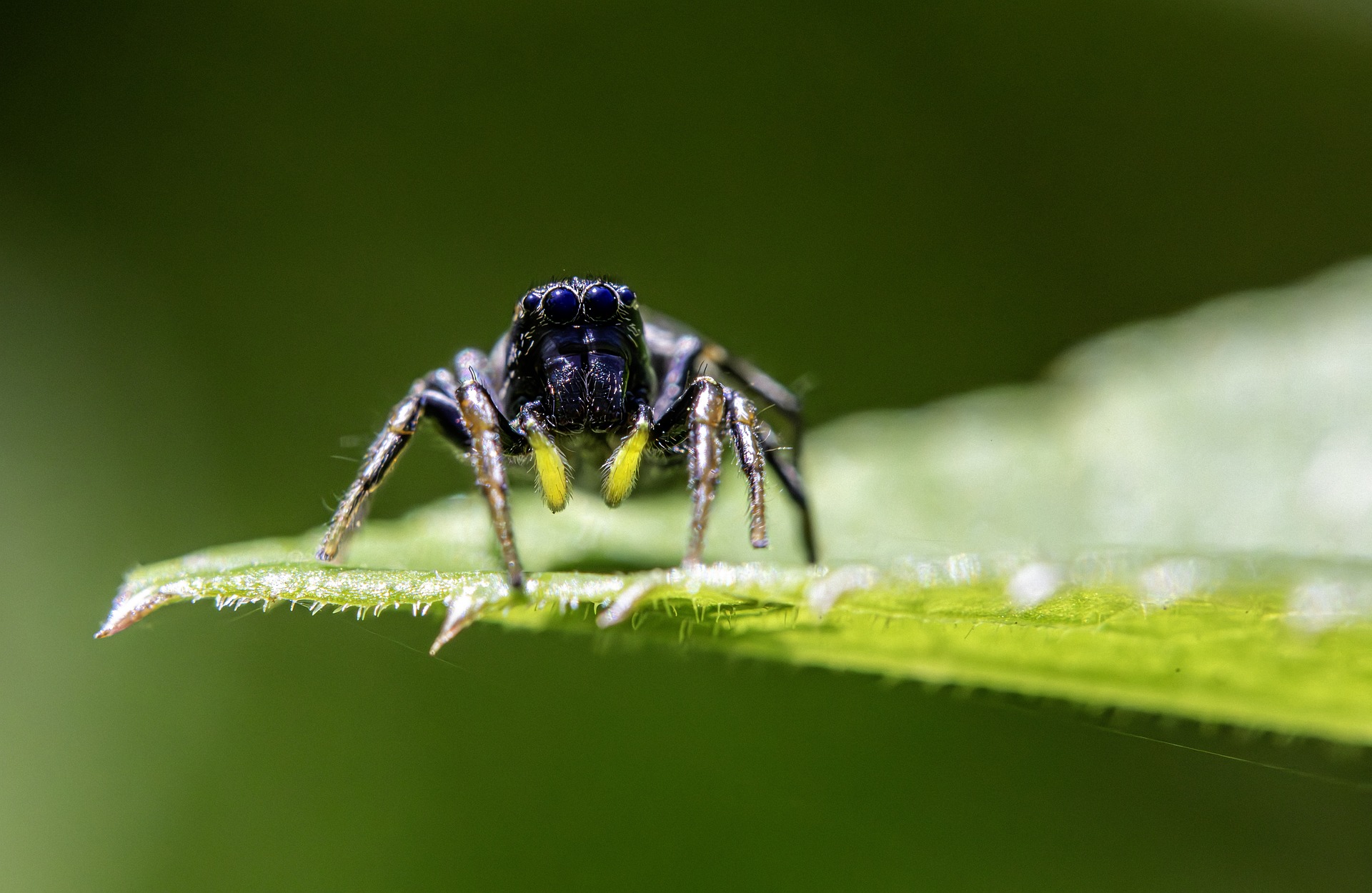The Copper Sun Jumper (Heliophanus cupreus) is a small, visually striking spider in the family Salticidae, commonly known as jumping spiders. This species is known for its vibrant coloration and agile movements. Here are some detailed features and characteristics of the Copper Sun Jumper:
Appearance
- Size: Copper Sun Jumpers are relatively small, with adults typically measuring between 4 to 6 millimeters in length.
- Coloration:
- Males: Males have a distinctive metallic green or coppery sheen on their cephalothorax (head and thorax combined) and abdomen. The legs are also iridescent, often with a greenish or bluish tint.
- Females: Females are generally less vibrant than males, with a more subdued coloration. They often have a brownish or grayish body with some metallic hints.
- Eyes: Like all jumping spiders, they have a set of large, forward-facing eyes, which provide excellent vision. They have four pairs of eyes, with the largest pair in the front.
Habitat
- Preferred Habitats: Copper Sun Jumpers are commonly found in various habitats, including grasslands, gardens, forests, and urban areas. They often reside on plants, shrubs, and trees.
- Geographic Range: This species is widespread across Europe and parts of Asia. They are adaptable and can thrive in a range of environments, from natural woodlands to human-altered landscapes.
Behavior
- Hunting: Copper Sun Jumpers are active hunters and do not spin webs to catch prey. Instead, they rely on their excellent vision and jumping ability to stalk and pounce on insects and other small arthropods.
- Jumping Ability: They are named for their remarkable jumping skills, which they use to catch prey and evade predators. They can leap many times their body length.
- Courtship: Males perform elaborate courtship displays to attract females, often involving visual signals and movements. These displays help males distinguish themselves from other males and appeal to potential mates.
Reproduction
- Nesting: Females lay eggs in silken sacs, which they typically attach to leaves or other structures. The female guards the eggs until they hatch.
- Development: Spiderlings go through several molts before reaching adulthood. They are independent from birth and start hunting small prey soon after hatching.
Conservation Status
- The Copper Sun Jumper is not considered endangered and is relatively common within its range. Its adaptability to various habitats contributes to its stable population.
Interesting Facts
- Vision: Jumping spiders, including the Copper Sun Jumper, have some of the best vision among arthropods. Their large, forward-facing eyes allow them to detect and accurately judge distances, which is crucial for their jumping and hunting behavior.
- Coloration: The iridescent coloration seen in males is due to microscopic structures on their body that reflect light, creating a shimmering effect. This is not only attractive to females but also serves as a form of camouflage.
Identifying Heliophanus cupreus
- Distinctive Features: The metallic sheen on the body and the characteristic jumping behavior are key identifiers. The large, forward-facing eyes and the overall body shape typical of jumping spiders also help in identification.
- Behavioral Traits: Observing their active hunting style and courtship displays can aid in distinguishing them from other spider species.
In summary, the Copper Sun Jumper (Heliophanus cupreus) is a small but visually striking jumping spider known for its iridescent coloration and agile hunting behavior. Found across Europe and parts of Asia, this adaptable spider thrives in a variety of habitats. Its excellent vision and remarkable jumping ability make it a fascinating species within the diverse family of jumping spiders.
Views: 15
Subscribe to the newsletter:
